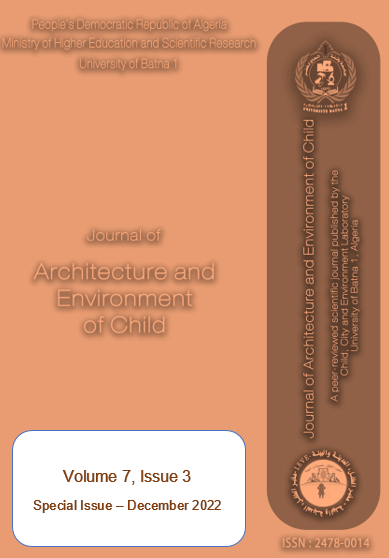Energetic Performances of Intermediate Spaces: The Case of the loggia in a collective dwelling in Medea
Keywords:
Collective dwelling, Intermediate space, Loggia, Energetic performances, Thermal simulationAbstract
This research is part of the global context of energy transition that our country is experiencing. It targets the study of the energetic performances of loggia in their architectural configuration as intermediate spaces in collective dwelling. We take the city center of Médéa as a case study.
In Algeria, housing production has consistently ignored physical and climatic factors in its design, consuming large amounts of energy. In addition, the typology of collective dwelling has faced specific problems regarding the appropriation of intermediate spaces that are part of co-ownership. Therefore, we ask ourselves about the role of the loggia and its impact on the thermal comfort of users and its energetic performances in the perspective of energy consumption rationalization.
Nowadays, research is focused on the housing of the future, which must be part of a sustainable approach that is aware of the context of the energy transition and that places the occupant and his comfort at the centre of its preoccupations. It is about housing that meets the quantitative and qualitative requirements of the population as well as the local climate characteristics.
The research aims to study the thermal impact of a loggia in a collective dwelling, in order to identify the advantages to be taken into account, as well as the periods of discomfort and the strategies to be followed. It also aims to study the impact of transformations made by users on the loggia. A parametric study was conducted to identify design elements that can help architects in the design of energy-efficient collective dwelling.
The methodology is based primarily on "dynamic thermal simulation" using the PLEIADE COMFIE (4.18.11) computer program, which takes into account both the hot and cold periods of the year. In parallel, field observations were carried out to identify the main modifications made to the loggia space.
The numerical simulation is based on a comparative approach to analyze the results of energy consumption of modified and unmodified dwellings. As for the parametric study carried out, it took into account the effects of geometry and the effect of glazing of the loggia, to arrive at the choice of the right configuration of this intermediate space while improving the energetic performance of the dwelling. In conclusion, the simulation highlighted several aspects that can lead to a considerable reduction in energy consumption, thus realizing a sustainable vision adapted to our urban environment.

